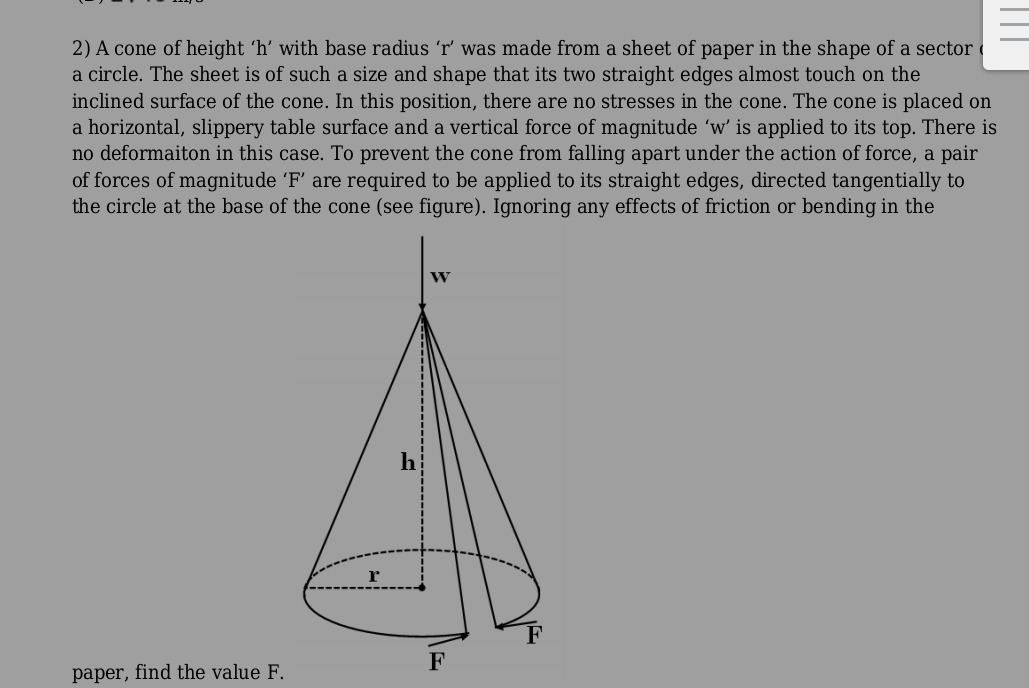Question
Question: A cone of height 'h' with base radius 'r' was made from a sheet of paper in the shape of a sector a ...
A cone of height 'h' with base radius 'r' was made from a sheet of paper in the shape of a sector a circle. The sheet is of such a size and shape that its two straight edges almost touch on the inclined surface of the cone. In this position, there are no stresses in the cone. The cone is placed on a horizontal, slippery table surface and a vertical force of magnitude 'w' is applied to its top. There is no deformation in this case. To prevent the cone from falling apart under the action of force, a pair of forces of magnitude 'F' are required to be applied to its straight edges, directed tangentially to the circle at the base of the cone (see figure). Ignoring any effects of friction or bending in the paper, find the value F.

F = w
Solution
The problem states that the tangential forces F are applied to prevent the cone from falling apart, implying that the force w causes an outward radial force at the base. For the cone to be in equilibrium, the tangential forces must balance this outward radial force. Given that the forces F are applied to the straight edges of the sector that forms the cone, and these edges are directed tangentially to the base, the magnitude of F must be equal to the magnitude of the force that tends to spread the base. The problem implies a direct relationship between the applied vertical force w and the tendency of the base to spread. In the absence of other forces or complexities, the tangential forces F directly counteract the effect of w on the base. Therefore, F=w.
